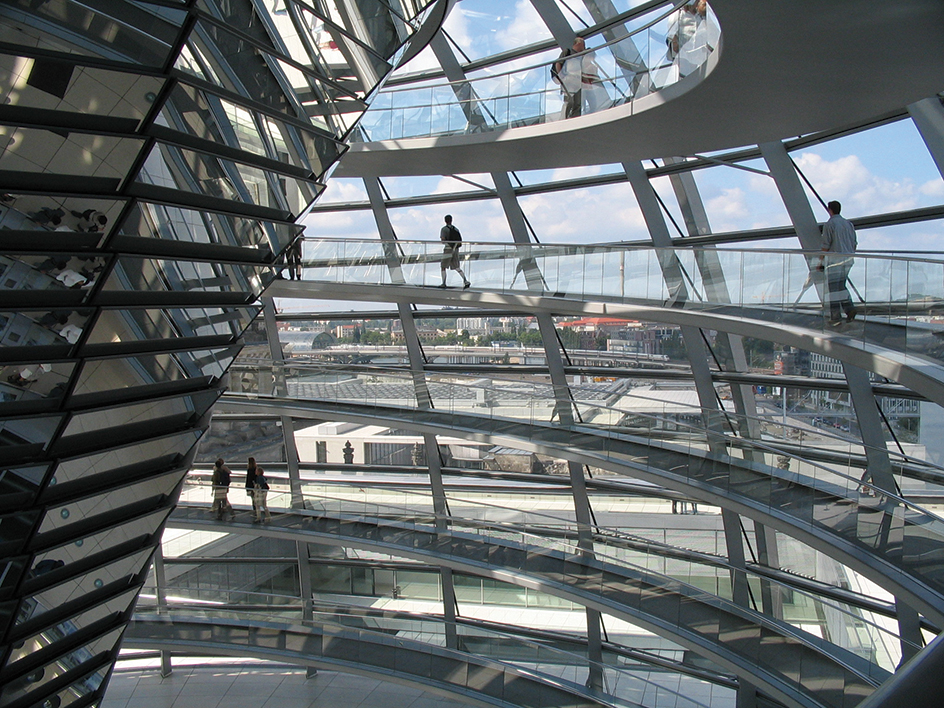Foster, Sir Norman (1935-…), a British architect, is one of the world’s leading modernist architects. Foster is noted for his technological approach to his art. Typical of this approach is his design for Stansted Airport (1991) in Essex, in the United Kingdom. The design recalls the wires and cross-braces on old biplanes in its structural cross-bracing on the outside of the terminal building and the smaller-scale crisscross network of metal bracing on the inside under the roof.

In 1999, Foster was awarded the Pritzker Architecture Prize, often considered the Nobel Prize of architecture (see Pritzker Architecture Prize ). The Pritzker Prize jury praised Foster for his “ability to produce remarkable solutions for diverse programs in urban settings.” An example is the Carrée d’Art (1984-1993), a cultural center placed next to an ancient Roman temple in Nîmes, France.
Foster first came to prominence in the late 1970’s. He became responsible for the design of many important buildings around the world, including the Willis Faber & Dumas building in Ipswich, England (1974); the headquarters of the Hong Kong and Shanghai Banking Corporation in Hong Kong (1985); the new British Library in London (1997); the Commerzbank building in Frankfurt, Germany (1997); the skyscraper 30 St. Mary Axe in London, also known as the Swiss Re Tower (2004); the 46-story glass-and-steel Hearst Tower in New York City (2006); and a giant terminal (2008) at the Beijing Capital International Airport in China.

Other major construction projects include Hong Kong’s airport in Chek Lap Kok (1998); the German parliament buildings in Berlin (1999); a bridge over the Tarn River at Millau, France (2004); a new wing for the Museum of Fine Arts in Boston (2010); and the Bow office building (2012) in downtown Calgary, Canada. Foster designed a new campus for Apple, Inc., (2017) in Cupertino, California. He also designed the Sheikh Zayed National Museum in the United Arab Emirates, scheduled to be completed in 2018. As a town planner, Foster has developed imaginative designs for such cities as Cannes, France, and Berlin. He also planned an underground transport system for Bilbao in Spain in 1995, and the site of Expo ’98 in Lisbon, Portugal.
Norman Robert Foster was born on June 1, 1935, in Manchester, England, and studied architecture and town planning at Manchester University (1956-1961) and at Yale University in the United States (1961-1962). At Yale, Foster met the British architect Richard Rogers. On their return to the United Kingdom in 1963, Foster and Rogers, with Wendy Cheesman (who became Foster’s first wife) and Georgie Wolton, set up their first firm, called Team 4 Architects. The practice ran for four years and built up a reputation for imaginative industrial buildings, such as the Reliance Controls building in Swindon, England. After these early efforts, Foster’s style developed a greater use of curved lines and a versatile handling of various building materials. Between 1968 and 1983, Foster collaborated on several projects with the American architect Buckminster Fuller. Foster was knighted in 1990 and in 1999 was made a peer, Baron Foster of Thames Bank.
